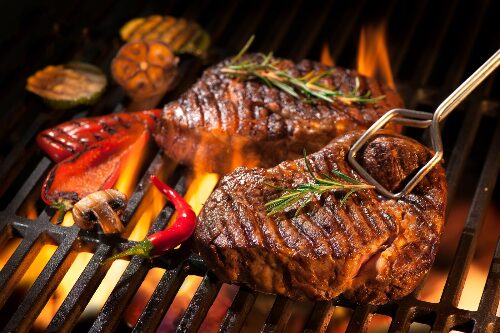Why Grilled Meat Turns Out Tough: 10 Mistakes You Should Avoid

Grilling is considered one of the simplest and most enjoyable ways to prepare food outdoors. It combines cooking with relaxation and social time, while often requiring less fat and fewer additives than traditional frying. Yet, in practice, many people unknowingly repeat the same grilling mistakes, resulting in dry, chewy, or tasteless meat. As highlighted by the editorial team at G.business, the key to successful grilling lies not only in good equipment, but in mastering temperature control, preparation techniques, and choosing the right cuts of meat. In this guide, we present the 10 most common BBQ errors — along with practical fixes, expert lifehacks, and a breakdown of why grilling can be healthier than pan-frying.

10 Most Common Grilling Mistakes and How to Avoid Them
1. Grilling meat straight from the fridge
Cold meat placed directly on a hot grill tightens up and cooks unevenly. The temperature shock can cause burnt exteriors and raw centers. Always let meat rest at room temperature for 30–45 minutes before grilling. This small step ensures even cooking and better texture.
Pro tip: Cover loosely and leave in a shaded area before grilling.
2. Salting too early
Salt draws moisture out of meat, especially when applied too far in advance. This can lead to dry and stringy texture. It’s best to salt just before placing meat on the grill — or even afterward. For marinades, avoid using salty sauces early.
Best practice: Salt no earlier than 10 minutes before grilling.
3. Not preheating the grill
A cold grill leads to meat sticking and prevents proper searing. You want the grill hot enough to create a crust that seals in juices. Preheat your grill for 10–15 minutes before adding anything. Use the “hand test” — if you can’t hold your hand 5 cm above the grate for more than 2 seconds, it’s ready.
4. Flipping too often
Flipping meat constantly prevents it from developing color and texture. Meat needs time to brown on each side. For most cuts, one good flip is enough. Over-handling causes loss of juices and poor crust formation.
5. No meat thermometer
Grilling by guesswork leads to undercooked or overcooked meat. A meat thermometer ensures safety and ideal doneness. This is especially crucial for chicken and large cuts.
Ideal internal temperatures:
- Chicken: 75°C (165°F)
- Pork: 68–72°C (155–160°F)
- Beef medium: 55–58°C (130–135°F)
6. Applying sweet marinades too early
Sugar burns quickly. If your marinade includes honey, ketchup, or barbecue sauce, apply it only in the final few minutes. Otherwise, the outside burns before the inside cooks.
Rule: Glaze with sweet sauces in the last 2–3 minutes.
7. Cutting meat immediately after grilling
After grilling, meat must rest so juices redistribute. Cutting too soon makes them leak out. Rest steaks for 3–5 minutes, larger cuts for up to 10. Cover loosely with foil and let them sit.
8. Using the wrong cuts of meat
Lean cuts like chicken breast dry out quickly. Fattier cuts like thighs, pork shoulder, or ribeye stay moist. Choose meat with some marbling or cook lean cuts in foil with added moisture.
9. Grilling over direct flame
Open flames cause uneven cooking, burning the outside and leaving the center raw. Grill over hot coals or controlled burners, not flames. Use direct heat for fast searing, indirect heat for thicker cuts.
10. Overloading the grill
Putting too much food on the grill reduces airflow and temperature, leading to steaming instead of grilling. Leave space between items. Grill in batches if needed.
Bonus: Avoid crowding — air circulation is key.
5 Practical BBQ Lifehacks
- Oil the grill grate with a paper towel and tongs before cooking to prevent sticking.
- Use zip-lock bags for marinating — they save space and coat meat evenly.
- Grill lemons or limes for 1–2 minutes to add a smoky twist to fish or salads.
- Add rosemary or thyme sprigs to the coals for natural aromatics.
- Clean the grill with a half onion on a fork while it’s still hot.
Why Grilling Is Healthier Than Frying
Grilling allows excess fat to drip away, reducing overall calories and saturated fat. Unlike pan-frying, which requires added oil, grilling often uses only natural meat juices. Short, high-heat exposure preserves vitamins and minerals in vegetables and lean proteins. You also avoid highly processed batters, coatings, or deep-fried additives. Grilling outdoors also encourages mindful eating, fresh air, and movement — all essential components of a healthier lifestyle.
Stay connected for news that works — timely, factual, and free from opinion — and insights that matter now: Why Jack Daniel’s Is Betting on Blackberry Whiskey – and What It Means for the Market